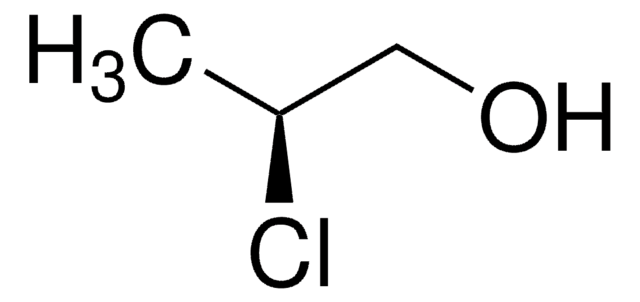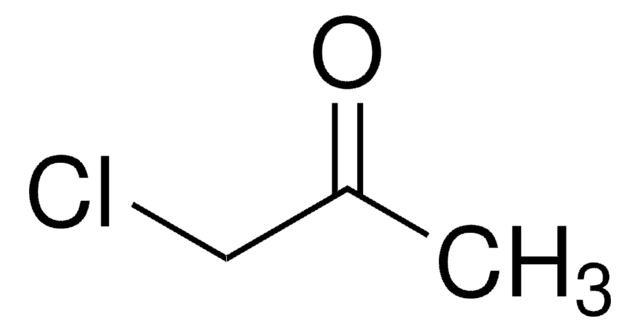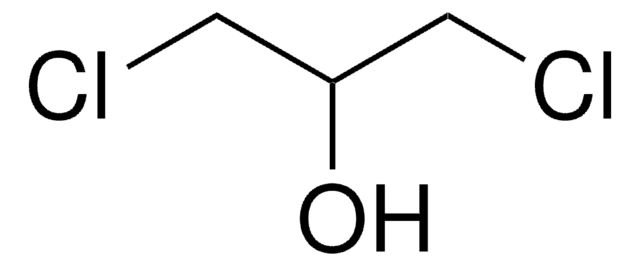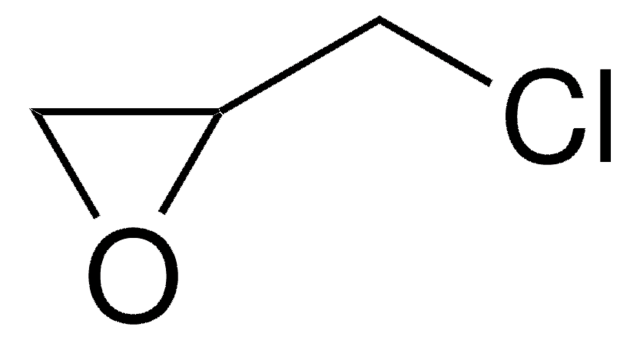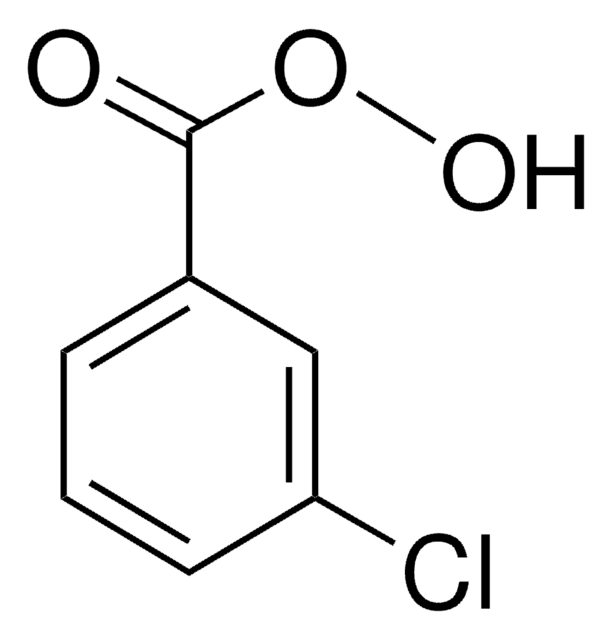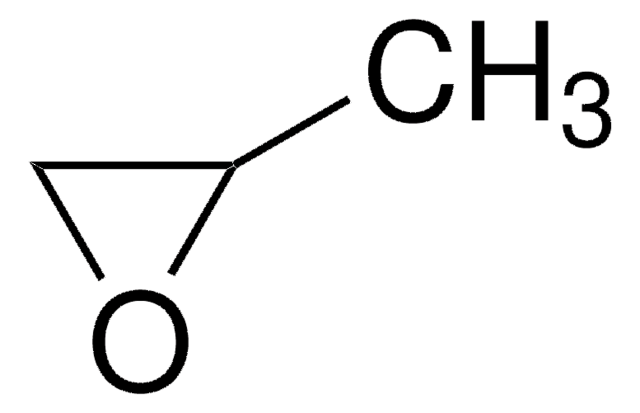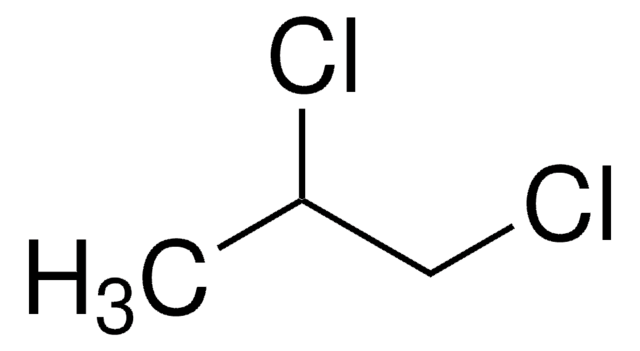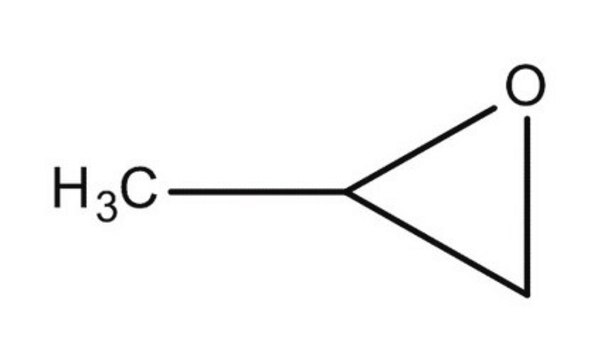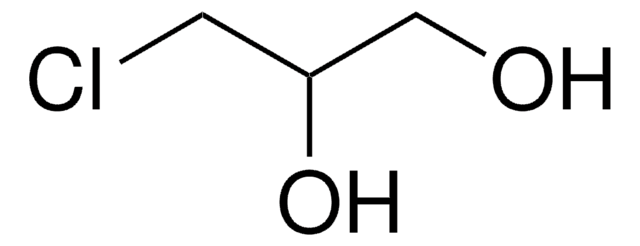292087
1-Chloro-2-propanol
70%
Synonym(s):
Chloropropanol, Propylene chlorohydrin
About This Item
Recommended Products
Quality Level
assay
70%
impurities
<25% 2-chloro-1-propanol
refractive index
n20/D 1.439 (lit.)
bp
126-127 °C (lit.)
density
1.111 g/mL at 25 °C (lit.)
SMILES string
CC(O)CCl
InChI
1S/C3H7ClO/c1-3(5)2-4/h3,5H,2H2,1H3
InChI key
YYTSGNJTASLUOY-UHFFFAOYSA-N
Looking for similar products? Visit Product Comparison Guide
Related Categories
General description
Application
- chemical intermediate for the manufacture of propylene oxide, a starting material for production of polyurethane polyols and propylene glycol
- as α,β-halohydrin standard during the enzymatic synthesis of α,β-halohydrins from gaseous alkenes
signalword
Danger
Hazard Classifications
Acute Tox. 3 Inhalation - Acute Tox. 3 Oral - Eye Irrit. 2 - Flam. Liq. 3 - Skin Irrit. 2 - STOT SE 3
target_organs
Respiratory system
Storage Class
3 - Flammable liquids
wgk_germany
WGK 3
flash_point_f
125.6 °F - closed cup
flash_point_c
52 °C - closed cup
ppe
Eyeshields, Faceshields, Gloves, type ABEK (EN14387) respirator filter
Certificates of Analysis (COA)
Search for Certificates of Analysis (COA) by entering the products Lot/Batch Number. Lot and Batch Numbers can be found on a product’s label following the words ‘Lot’ or ‘Batch’.
Already Own This Product?
Find documentation for the products that you have recently purchased in the Document Library.
Customers Also Viewed
Our team of scientists has experience in all areas of research including Life Science, Material Science, Chemical Synthesis, Chromatography, Analytical and many others.
Contact Technical Service